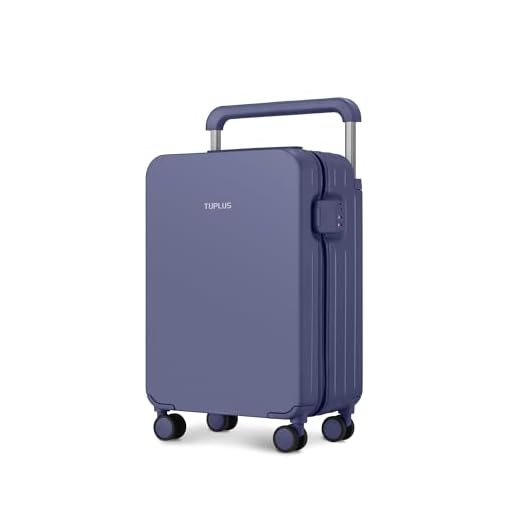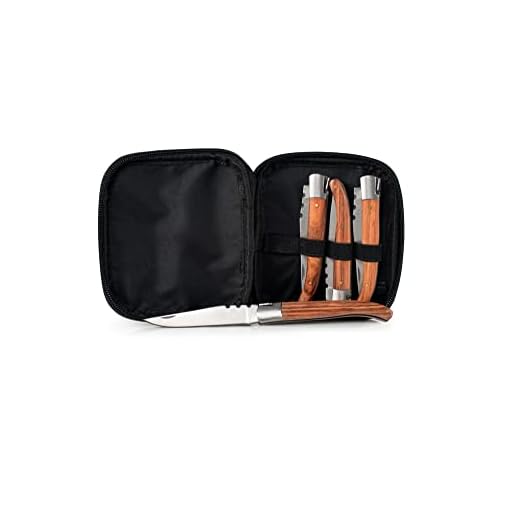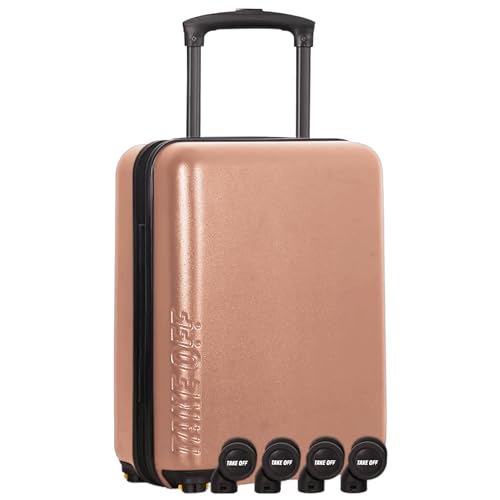







Weight and size limits: most carriers set per-piece allowance at 23 kg for standard economy and 32 kg for premium classes, with a maximum linear dimension (length + width + height) of 158 cm. Oversize or overweight pieces incur surcharges or must be shipped as cargo.
Batteries and power banks: spare lithium cells and power banks are forbidden from the aircraft hold and must remain in the cabin; batteries fitted inside devices may be accepted in the hold only if the device is switched off, terminals insulated against short-circuit and the airline’s specific rules are met. Lithium-ion units above 100 Wh require airline approval; units above 160 Wh are prohibited.
Firearms, ammunition and sporting equipment: firearms are permitted for transport in the aircraft hold only when unloaded, encased in a locked hard-sided container, and declared at the baggage drop. Ammunition must be in approved packaging and is subject to airline and national restrictions–obtain written airline confirmation before travel.
Prohibited and restricted substances: explosives, fireworks, compressed gas canisters, flammable liquids and corrosives are not acceptable for stowage. Aerosols and certain household chemicals are limited by quantity and packaging standards; alcohol over 70% ABV is forbidden, while alcohol between 24%–70% ABV is often restricted to small volumes and may require declaration.
Packing and documentation tips: use hard cases and internal padding for fragile goods; lock containers but keep keys or combinations with you in the cabin; tape battery terminals or remove batteries for devices placed in the hold; keep purchase invoices and photograph valuables for claims; always check the carrier’s dangerous-goods guidance and the destination country’s import rules before drop-off.
Permitted and Prohibited Articles for Hold Baggage
Recommendation: Keep passports, cash, high-value electronics and essential medicines with you in the cabin; place clothing, shoes, sports equipment and most toiletries in the hold bag while observing airline weight and size limits.
Weight and size: typical piece allowance is 23 kg (50 lb) for economy and 32 kg (70 lb) for premium classes; maximum linear dimensions (length + width + height) generally must not exceed 158 cm (62 in). Overweight or oversized trunks often incur fees or require freight handling.
Lithium batteries and power banks: spare lithium batteries and power banks are forbidden from the hold and must remain in the cabin. Lithium‑ion batteries up to 100 Wh are permitted in devices; batteries between 100 Wh and 160 Wh require airline approval and are normally allowed only in the cabin; batteries above 160 Wh are typically prohibited on passenger aircraft. Protect terminals from short circuits by taping contacts or placing batteries in original packaging.
Firearms and ammunition: firearms require prior airline approval, must be unloaded, secured in a locked hard case and declared at check‑in. Ammunition must be in factory or purpose‑made packaging, with many carriers limiting the quantity (common allowance up to 5 kg net per passenger) and requiring declaration on arrival. Verify national and destination permits before travel.
Dangerous goods to avoid placing in the hold include: explosives (fireworks), flammable liquids and solids (paints, thinners, lighter refills), oxidizers, corrosives (batteries leaking acid, bleach), compressed gas cylinders (scuba tanks) unless rendered empty and certified, and mercury. Aerosols with flammable propellants are often restricted; non‑flammable toiletries in reasonable quantities are usually allowed.
Medical supplies: prescription medicines are acceptable in the hold, but keep critical medications and items requiring refrigeration in the cabin. Medical oxygen cylinders are generally prohibited; portable oxygen concentrators may be permitted in the cabin with advance airline approval and documentation.
Perishables and fragile goods: avoid placing irreplaceable items, perishables or delicate instruments in the hold. If unavoidable, use rigid, well‑padded cases, seal food appropriately, and note that temperature control is not guaranteed.
Practical steps before travel: consult the specific carrier’s dangerous‑goods policy and the destination country’s rules; photograph contents and retain receipts for valuable articles; label the exterior with contact details; lock the case with a TSA‑approved lock where required; declare regulated possessions at the airline desk and obtain written confirmation when necessary; consider transit insurance for high‑value belongings.
Are lithium‑ion batteries and power banks permitted in the aircraft hold and how to prepare them?
Spare lithium‑ion batteries and power banks must not be placed in the aircraft hold; keep them in the passenger cabin at all times.
Devices with batteries installed are generally permitted in either the passenger cabin or the aircraft hold, but storing devices in the cabin is strongly recommended because power banks are classified as spare batteries and therefore prohibited from the hold.
Capacity limits: batteries up to 100 Wh are allowed in the cabin without prior approval; batteries between 100 Wh and 160 Wh require airline approval and are usually limited to two spare units per passenger; batteries above 160 Wh are prohibited on passenger planes and must be shipped as dangerous goods under special cargo procedures.
How to calculate watt‑hours: Wh = (mAh × V) / 1000. Examples: 10,000 mAh at 3.7 V = 37 Wh; 20,000 mAh at 3.7 V = 74 Wh; 50,000 mAh at 3.7 V = 185 Wh (exceeds passenger limits).
Terminal protection: insulate exposed terminals with electrical tape or use original manufacturer packaging. Avoid loose placement that allows metal contact between terminals.
Power state and activation prevention: switch devices fully off, remove batteries when possible, disable any functions that could cause automatic activation (alarms, timers). Emergency activation risk must be minimised.
Packaging: place each spare battery or power bank in an individual protective pouch or plastic bag to prevent short circuits and physical damage; cushion larger devices to prevent crushing.
Quantity and documentation: keep a record of Wh ratings or manufacturer labels for borderline units; notify the airline in advance for batteries rated 100–160 Wh or for unusually large quantities intended for professional use.
Security screening: be prepared to remove batteries and power banks from cabin baggage for separate inspection at checkpoints; present calculated Wh values if requested.
Damaged batteries: do not transport swollen, punctured, leaking or recalled batteries in either cabin or hold; follow manufacturer or authorised recycling/disposal instructions.
How to pack liquids, alcohol, and duty-free purchases in hold baggage to comply with airline and safety limits?
Limit spirits between 24% and 70% alcohol by volume (ABV) to 5 litres per passenger in unopened retail packaging; beverages above 70% ABV (over 140 proof) are forbidden from air transport; beverages below 24% ABV are normally not restricted by carriage rules but remain subject to customs allowances at destination.
Regulatory limits and documentation
Follow IATA/ICAO and national security guidance: alcohol >70% ABV prohibited; 24–70% ABV limited to 5 L per passenger in original sealed retail packaging. Keep receipts for duty-free purchases and retain the tamper-evident bag supplied at purchase; if a connection requires security re-screening, presentation of the sealed bag plus receipt is often required to prevent confiscation. Declare volumes exceeding personal customs exemptions – allowances vary by country (many destinations offer roughly 1–2 L duty-free for adults, but verify the specific destination rule before travel).
Packing technique and damage prevention
Insulate each bottle with its original seal then wrap in bubble wrap or a padded wine skin; place wrapped bottles upright in the centre of the case surrounded by soft clothing on all sides. Use zip-lock bags to contain potential leaks and double-bag fragile containers. For perfumes and aerosols, use spill-proof containers and avoid placing pressure-sensitive sprays near hard objects. Distribute heavy bottles between two checked units to reduce rupture risk during handling and mark the exterior as fragile.
Keep purchase receipts and ABV information accessible for inspection by security or customs officers. Consult the carrier’s hazardous-goods policy before dispatch: some airlines prohibit specific aerosols, large quantities of flammable liquids, and certain industrial solvents even when stowed in the hold. For unrelated travel pet containment tips see how to keep dog inside fence.
Tools, knives and sporting equipment: rules and secure packing for the aircraft hold
Do not pack loose blades, unprotected tools or unsecured heavy gear in the aircraft hold; sheath blades, lock or hard-case tools, and reinforce bulky sporting gear to prevent movement and damage.
Sharp objects – specific preparation
- Blades: place each blade in a rigid sheath or dedicated blade guard; add a layer of cardboard or 2.5 cm foam between sheath and case wall, then wrap with two layers of bubble wrap.
- Folding knives and multi-tools: close fully, lock if possible, then place inside a small hard container or a wrapped pouch inside a larger case.
- Fixed-blade tools (chisels, axes): immobilize in a hard-sided box, bolt or strap handles to prevent rotation; secure box with a TSA-approved lock if flying to/from/within the US.
- Labeling: add a visible “sharp” sticker on the outside of the container so handlers can take extra care.
Heavy, bulky and sporting gear – restraint and placement
- Hard case recommended: use impact-resistant cases (e.g., ATA-style) for bicycles, golf clubs, skis, snowboards and power tools; soft bags are acceptable only with additional internal protection.
- Weight distribution: place the heaviest pieces at the base (nearest the wheels) and center them over the suitcase frame to reduce tipping and stress on zips and seams.
- Packing technique: wrap each component (poles, bats, rackets) in foam or towels; use heavy-duty straps or ratchet straps inside the case to prevent shifting.
- Disassembly: remove pedals, loosen handlebars, deflate bicycle tyres slightly, and pack small parts in sealed, padded containers to avoid punctures and snapped spokes.
- Protection for edges: cover ski and skate edges with guards and add foam around tips and bindings; for rackets, pad frames where they meet other gear.
Regulatory and airline operational points:
- US Transportation Security Administration: typical guidance permits knives and tools only in the aircraft hold; tools longer than 7 in (18 cm) must not be in the cabin. Verify local authority wording for non-US flights.
- Weight and size: standard piece limits are often 23 kg (50 lb) in economy and 32 kg (70 lb) for higher classes or special allowances; heavyweight pieces may incur oversize/overweight charges or require advance booking with the carrier.
- Firearms and ammunition: must be unloaded, declared to the carrier at check-in, placed in a locked hard-sided case, and packed according to airline and national rules.
- Airline policies differ: confirm acceptance, packaging requirements and fees with the airline before travel; photographic proof of professionally prepared cases reduces delays at the counter.
Packing checklist before departure:
- All blades sheathed and taped; sheaths secured to prevent removal.
- Tools placed in hard box, tied down and locked.
- Sporting gear disassembled where possible, each piece padded and strapped.
- Weight distributed low and centered; total weight within carrier limits.
- Required declarations completed for firearms/ammo; documentation and contact numbers accessible.
What are the airline and legal requirements for transporting firearms, ammunition, and replicas in checked baggage?
Always transport firearms unloaded, secured inside a hard-sided, lockable case, and declare them at the airline ticket desk before placing the case in hold baggage.
Mandatory operational steps for firearms
Unload the weapon; remove magazines and store them empty. Place the firearm in a purpose-built hard case that cannot be opened without a key or combination. Lock the case; keep keys or combinations with you, not inside the case. Present the firearm and relevant permits at the airline ticket desk and complete any carrier firearm declaration form required by the airline. Hand carriage in the passenger cabin is forbidden for firearms; stow the locked case in the aircraft hold only after airline acceptance.
Ammunition, packaging, quantities and classification
Ammunition must be packed in secure, purpose-made containers (cardboard or metal boxes designed for ammunition) or the original manufacturer packaging; loose loose rounds in pockets or with the firearm are not permitted. Ammunition is classified as a dangerous good (UN0012) under IATA Dangerous Goods Regulations and is accepted only in hold baggage subject to airline acceptance, packaging rules and per-passenger quantity limits set by the carrier and by national law. Always confirm carrier-specific limits and whether a written airline approval or special handling fee is required.
Replica, deactivated and inert firearms: present supporting documentation (certificate of deactivation, proof of ownership, manufacturer declaration) to the airline and to customs at origin, transit and destination. Many states and countries treat realistic replicas the same as functional firearms for import/export and airport security purposes; some jurisdictions prohibit transit with realistic non-functioning models.
Documentation and legal requirements: carry government-issued firearm permits, export/import licenses when required, purchase receipts and serial numbers. Research and secure any destination and transit permits before travel: countries such as the United Kingdom, Australia and parts of Europe require prior authorization and strict import controls; failure to comply can lead to seizure, fines and criminal charges.
Inspection, locks and airline procedures: expect physical inspection of the locked case by security personnel; use a lock you can quickly open if requested or be prepared for the carrier to break a lock. Declare firearms and ammunition at the ticket desk; if a carrier refuses acceptance, do not attempt alternative drop-off–non-accepted weapons or undeclared weapons will be confiscated and may trigger legal action.
Practical checklist before departure: verify airline firearm and ammunition policies online or by phone; verify destination and transit country regulations and permit requirements; pack firearm unloaded in a hard-sided locked case; pack ammunition separately in approved boxes; bring all permits and purchase/serial documentation; arrive at the airport early for processing. For recommended travel cases and sizes suitable for secure transport, consider resources such as best luggage for traveling with toddler and best luggage choice magazine for case durability and airline-acceptable dimensions.
Should valuables, cash, medications, and fragile electronics be placed in hold or cabin baggage?
Recommendation: Keep valuables, cash, prescription medicines and fragile electronics in cabin baggage whenever possible; place in the hold only if the carrier allows and after following the protective steps below.
Valuables (jewellery, watches, irreplaceable keepsakes, passports, backups of documents): Always retain with you. Photograph each piece, record serial numbers, and store copies of passports/IDs separately. Obtain standalone insurance for high‑value articles. If an item must be stowed in the hold, declare its value at check‑in if the airline offers excess valuation and use a locked hard case and tamper‑evident wrapping; keep receipts to support any claim.
Cash and negotiable instruments: Keep cash on your person or in cabin baggage; split funds between secure places (money belt, concealed wallet, bank card). Declare amounts above common cross‑border thresholds – typically USD 10,000 or EUR 10,000 – using the appropriate customs form (in the United States use FinCEN Form 105). Carry exchange receipts and bank statements when transporting large sums.
Medications (prescription and essential OTC): Retain all medicines in cabin baggage in original labelled containers with the prescription label. Carry a doctor’s letter listing generic names and dosages for controlled substances or injectable therapies (insulin). Bring at least the full duration of the trip plus two extra days’ supply and a written dosing schedule. Inform security officers if a medication requires screening exception (liquid insulin, syringes); present prescriptions and documentation on request. For destination restrictions, verify legality of specific drugs before travel and obtain appropriate permits if needed.
Fragile electronics (laptops, cameras, external drives, musical electronics): Keep in cabin baggage to reduce theft and mishandling. Before travel: backup and encrypt data, remove memory cards and SIMs, power off devices, secure with soft sleeves inside a hard carry case, and cushion between clothing layers. If a device must go into the hold, place it in a sturdy, lockable hard case with dense padding (foam or layered clothing), label the case with contact details, photograph the item and packaging, and declare high‑value equipment to the carrier or use an ATA Carnet for professional gear to avoid import complications.
Documentation, insurance and airline liability: Keep purchase receipts and serial numbers with you. Verify the carrier’s contract of carriage for baggage liability limits before departure – international convention rules (Montreal Convention) apply to many international flights and domestic regimes differ – and consider supplemental travel insurance for amounts exceeding the airline’s coverage.
Practical checklist: photos & serials, prescriptions & doctor’s letter, backup of electronic data, padded carry case for fragile gear, split cash strategy, receipts for high‑value goods, verify carrier and border rules prior to departure.







